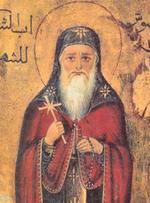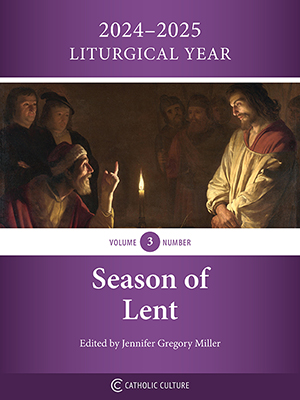A wretched ‘tell-all’ Vatican exposé that tells us only one thing
By Phil Lawler ( bio - articles - email ) | Mar 21, 2019
“I don’t often talk about my own life in my books,” writes Frederic Martel, near the close of his sensationalistic In the Closet of the Vatican. Reading that phrase, I laughed out loud. The humor was unintentional; Martel takes himself very seriously. Still in light of the spectacular self-promotion on display in the preceding 300+ pages, this was one of the few entertaining passages in an otherwise wretched book.
In the Closet is styled as a tell-all exposé, and the considerable pre-launch publicity hinted that the author would provide all the salacious details about homosexual activity at the Vatican. But as I plowed through the book (originally written in French, here in an awkward English translation), I discovered absolutely nothing new. Nothing. Martel offers page after page of gossip, speculation, innuendo, and unsubstantiated claims. But apart from what I already knew, I learned nothing from the book—except what I learned about the author himself.
Again and again Martel reminds the reader that he devoted years to research on this book, working with a squadron of assistants and flying around the world to interview Catholic clerics and homosexual activists. (The categories, he argues convincingly, are by no means mutually exclusive. But we already knew that.) He boasts that he spoke with “41 cardinals, 52 bishops and monsignors, 45 apostolic nuncios, secretaries of nunciatures or foreign ambassadors, 11 Swiss Guards, and over 200 Catholic priests and seminarians.” Yet remarkably, when the time comes to make a factual claim he cannot verify it; when he provides a damning quotation it is from an anonymous source, or from someone with an obvious ax to grind and no evidence to corroborate his charges.
When the book made its debut, many reviewers seized on one nugget: Martel’s charge that the late Cardinal Alfonso Lopez Trujillo was an active homosexual who preyed on young men. Since the Colombian cardinal had frequently denounced homosexual activity, particularly in his role as president of the Pontifical Council for the Family, Martel charges Lopez Trujillo with hypocrisy. And worse. He portrays the cardinal as a venal, petty despot, who lived in luxury and brutally mistreated the homosexual prostitutes he hired. If it is true, this portrait is damning indeed. But is it true? Martel offers no hard evidence, and a skeptical reader cannot help noticing that while the author sprinkles hints and suspicions throughout In the Closet, only one man—Trujillo—would have solid grounds for a libel case based on the book, and that man is dead.
To accuse one prelate of secret homosexual affairs is a serious matter. But Martel suggests that most Vatican officials are homosexual. He toys at length with the question of whether various Church leaders are active homosexuals or merely inclined toward homosexuality, but insists that, one way or another, virtually the entire Vatican bureaucracy is staffed by homosexuals.
Martel, a homosexual who has written extensively about the homosexual life, views Vatican affairs almost exclusively through the homosexual perspective. If someone speaks or writes about the issue of homosexuality, Martel fastens on the statement(s). If a reader drew all of his knowledge about Catholicism from this book, he might reasonably conclude that Jacques Maritain never wrote on any topic other than homosexuality, and that Pope Benedict XVI devoted most of his teaching to the same topic. Oddly but predictably, Martel thinks that the Catholic Church is obsessed with sexuality.
To open a typical chapter of In the Closet, Martel describes a meeting with a powerful Vatican official. He describes the prelate’s office or apartment in detail, boasts about how often he spoke with him, comments on the prelate’s clothing and/or mannerisms, perhaps even reports a soupcon of flirtation, and then—just as the reader is waiting expectantly for some revealing quote from the Vatican insider—Martel shifts his focus to talk about another informant who has some tale to tell about that Church official. Again and again Martel provides the lead-up to a newsworthy item, then dithers off into speculation. The attentive reader eventually notices that while the author did indeed speak with many important Church officials, all the interesting quotations come from the dissatisfied priests and homosexual activists who are Martel’s ideological allies and favorite sources.
In his portraits of bishops and cardinals, Martel is ham-handed. His book is populated with cartoonish characters, who might as well be wearing white and black hats. If the author doesn’t like someone, the reader knows that immediately. (“Bagnasco is living proof that men and monkeys have a common ancestry.”) He is catty in describing the “bad guys,” and effusive in his introduction of favored characters. Father Timothy Radcliffe, for example, is a man capable of “making a thrilling comparison between Jurassic Park and Leonardo da Vinci’s Last Supper.” (Aren’t you just dying to hear more?)
While he dutifully condemns sexual abuse of minors, Martel is quick to dismiss charges of abuse that were levelled against his favorite bishop, commenting sympathetically on “his tragedy, made all the more poignant since he was, he tells me, the ‘spiritual director’ of the man in question.” If the bishop was spiritual director to the young man with whom he had a sexual relationship, wouldn’t that constitute prima facie evidence of abuse? Martel is satisfied with the bishop’s facile explanation: “The ‘boy’ was an adult,” he adds, “and there was never any sexual abuse.”
Martel grudgingly gives Pope Benedict XVI credit for cracking down on Marcial Maciel, the disgraced founder of the Legionaries of Christ. But, perhaps because Pope Benedict is one of his favorite villains in this book, he cannot resist a complaint about Maciel’s treatment:
His punishment was still quite lenient, however, more so than the penalty imposed on great theologians such as Leonardo Boff or Eugen Drewermann, who were punished for committing no crimes other than defending their progressive ideas. Marcial Maciel was not reported to the law by the Church; he was not excommunicated, or arrested, or imprisoned.
(Here I am at a loss. Although I follow Catholic news for a living, I’ve never seen reports on the excommunication, arrest, or imprisonment of Boff or Drewermann.)
What has Martel accomplished with this book? He has perhaps increased awareness about the level of homosexual influence at the Vatican. (Although he has proven nothing, where there’s that much smoke,…) In his own peculiar way, he has bolstered the credibility of Archbishop Carlo Maria Vigano, who complained about the power of homosexual networks. But Martel makes the novel assertion that all of the important conflicts within the hierarchy today are spats between competing homosexual cliques.
Martel asserts that any Catholic leader who speaks out against homosexual activity is a repressed or closeted homosexual. He cannot and does not prove this claim, which is absolutely central to the argument of his book. Rather, he treats the claim as axiomatic. He seems incapable of understanding that someone who professes the Catholic faith could actually believe what the Church teaches regarding human sexuality. Thus he apparently believes that if he can show that a man has homosexual inclinations, it goes without saying that the man is a hypocrite for speaking out against homosexual activity, rather than a hero for resisting temptation. Self-control and self-discipline are concepts apparently beyond Martel’s grasp, as both the substance and the style of this book demonstrate.
Despite his hostile approach—or perhaps I should say because of it—Martel can offer an interesting new perspective on the scandal that plagues our Church today:
Behind the majority of cases of sexual abuse there are priests and bishops who have protected the aggressors because of their own homosexuality and out of fear that it might be revealed in the event of a scandal. The culture of secrecy that was needed to maintain silence about the high prevalence of homosexuality in the Church has allowed sexual abuse to be hidden and predators to act.
So the homosexual lobby is a decisive factor in the scandal, according to its most aggressive champion! No wonder that champions of the gay movement within the Church, like Father James Martin, are uneasy about the Martel book.
Yet Martin and his allies might still welcome Martel’s overall project. Because the twisted logic of Inside the Closet leads to the conclusion that, since all Church leaders are homosexual anyway, we might as well eliminate the tensions that spring from traditional Church teaching and embrace the gay culture. Was that the message that Martel intended to promote?
While asking myself that question, I found myself pondering another, closely related question. How did Martel—an author who was clearly not sympathetic to the Catholic Church—gain access to so many leading cardinals and bishops? Where did he find the resources that enabled him to fly around the world interviewing bishops, priests, and gay activists? Some influential people apparently wanted to see this book in print. Cui bono?
While I do not expect answers to those questions, I do question the integrity of anyone who knowingly promoted this execrable book. Inside the Closet is loaded with slander and detraction, bare of cogent argumentation, sophomoric in its approach to Catholic history and Church doctrine. And did I mention self-indulgent?
“If there is one pathetic character in this book, it’s Lopez-Trujillo,” writes Martel. No, it’s the author.
All comments are moderated. To lighten our editing burden, only current donors are allowed to Sound Off. If you are a current donor, log in to see the comment form; otherwise please support our work, and Sound Off!








